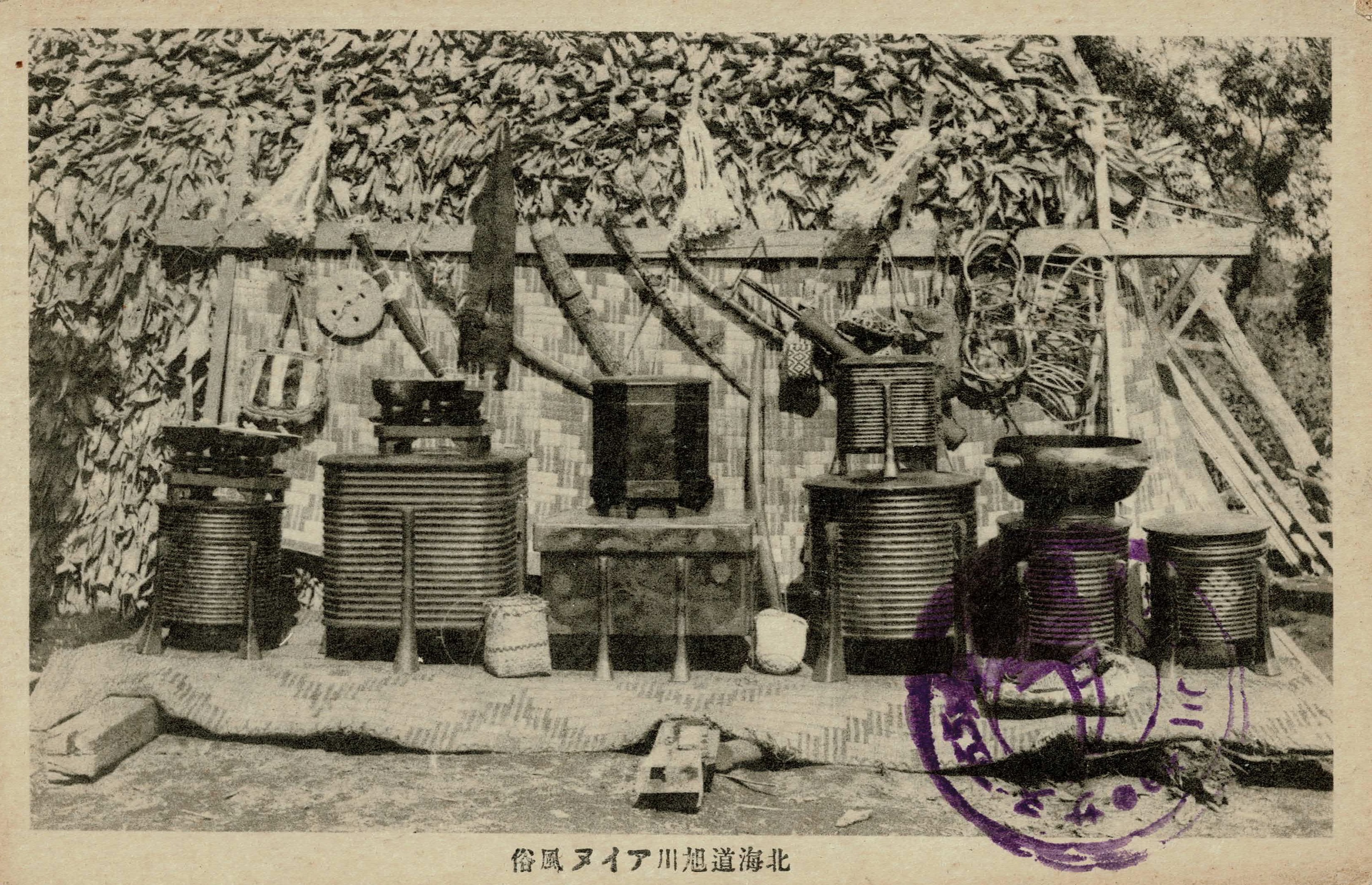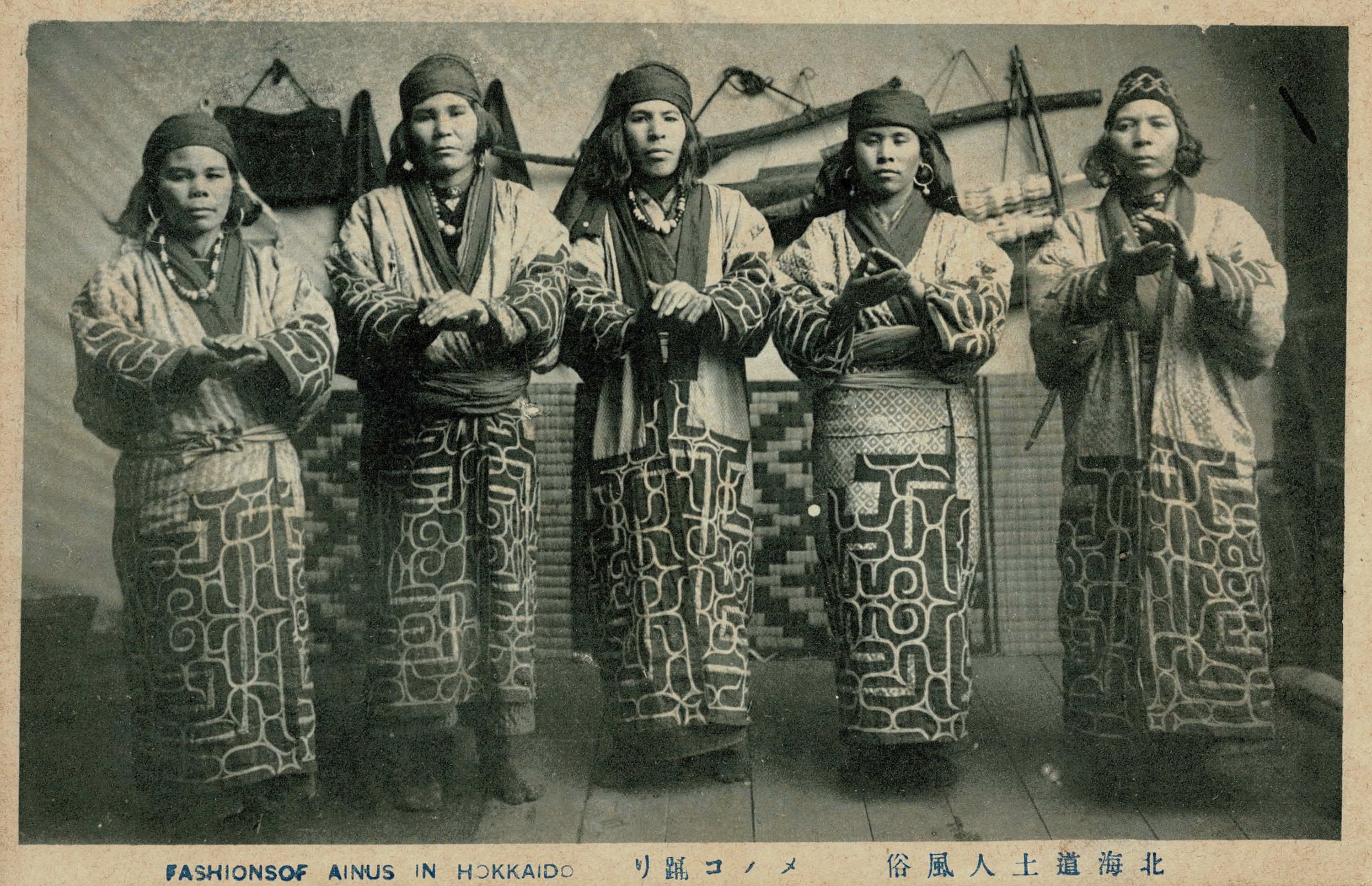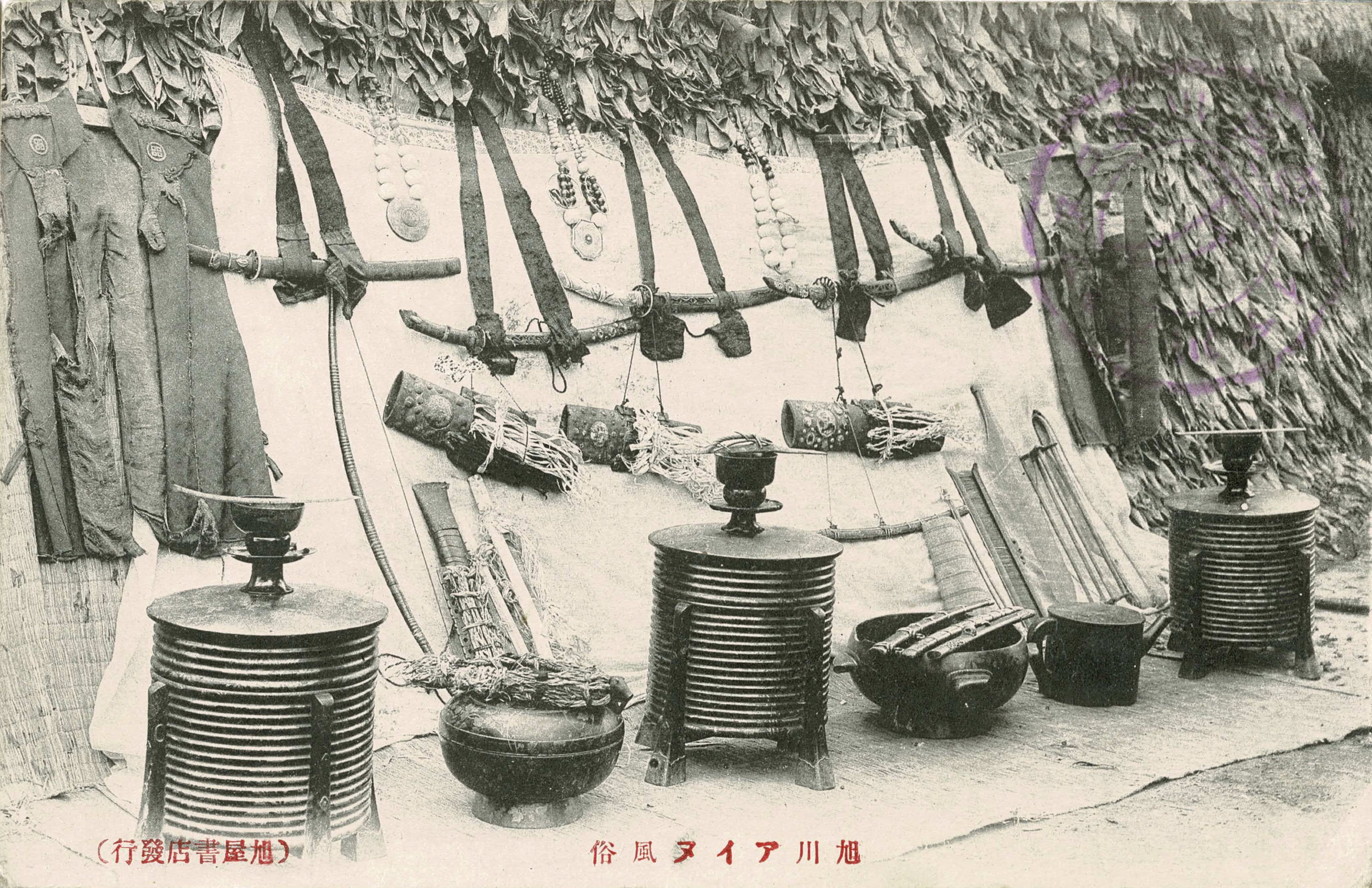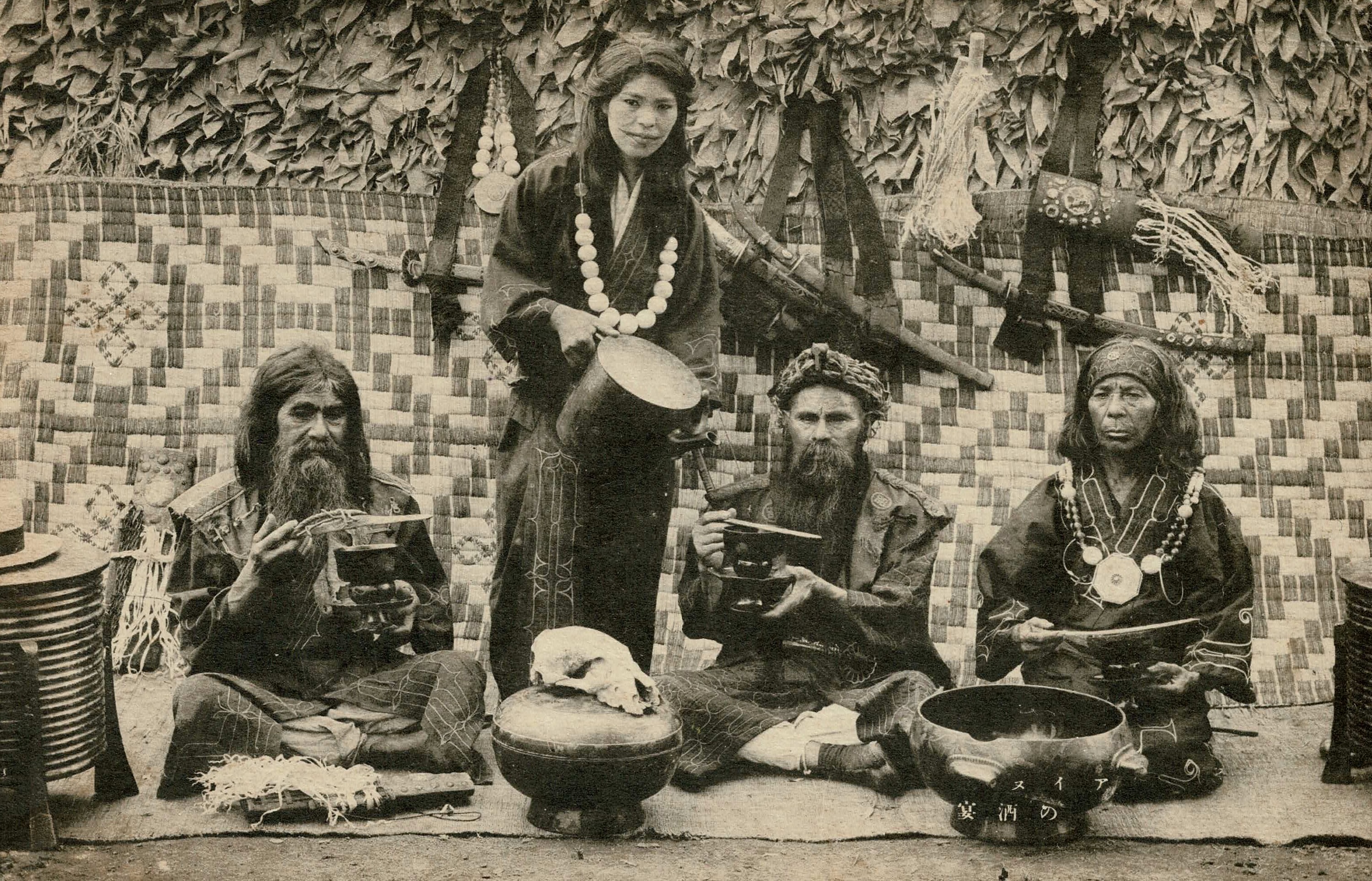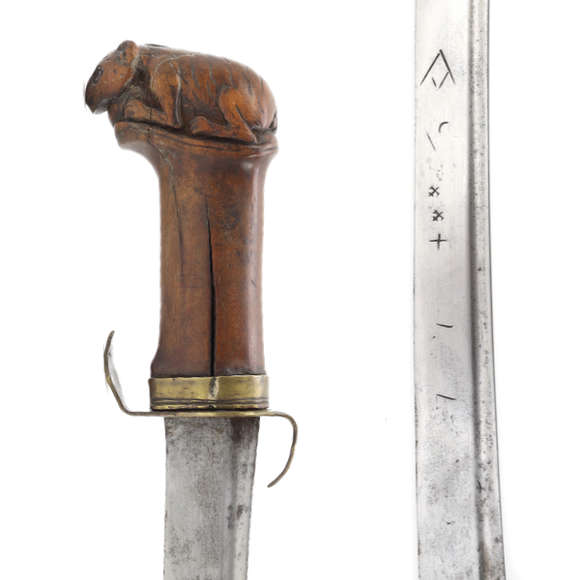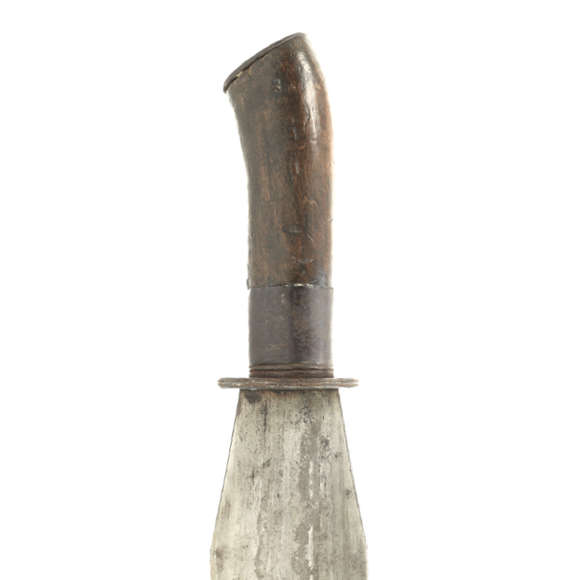Language: Ainu
Source: Batchelor; An Ainu-English-Japanese dictionary. 1905.
Description
Emushi or sometimes simply written as emush is the Ainu word for their sword. It has the general form of the Japanese sword, but without the collar piece (habaki) and with archaic looking hilt and scabbard that are typically made of carved wood, held together by strips of cherry bark.
Hilts (emush-nip) are often decorated with a number of metal ornaments, popular among which washers with rings that appear to come off samurai armors. There is also often a silver shield like ornament at the top of the hilt where it meets the guard, embossed with decorative motifs.
Guards are often Japanese imported tsuba or local reproductions of such. Especially older styles like pierced chrysanthemum forms were very popular. Older aoi-gata (葵形) "hollyhock shape" tsuba that belong to the Japanese tachi are also seen occasionally.
Emushi are hung on the wall or carried over the shoulder with a bark and cotton sash called emush-at.

An Ainu emushi with its emush-at.
Mandarin Mansion inventory 2022.
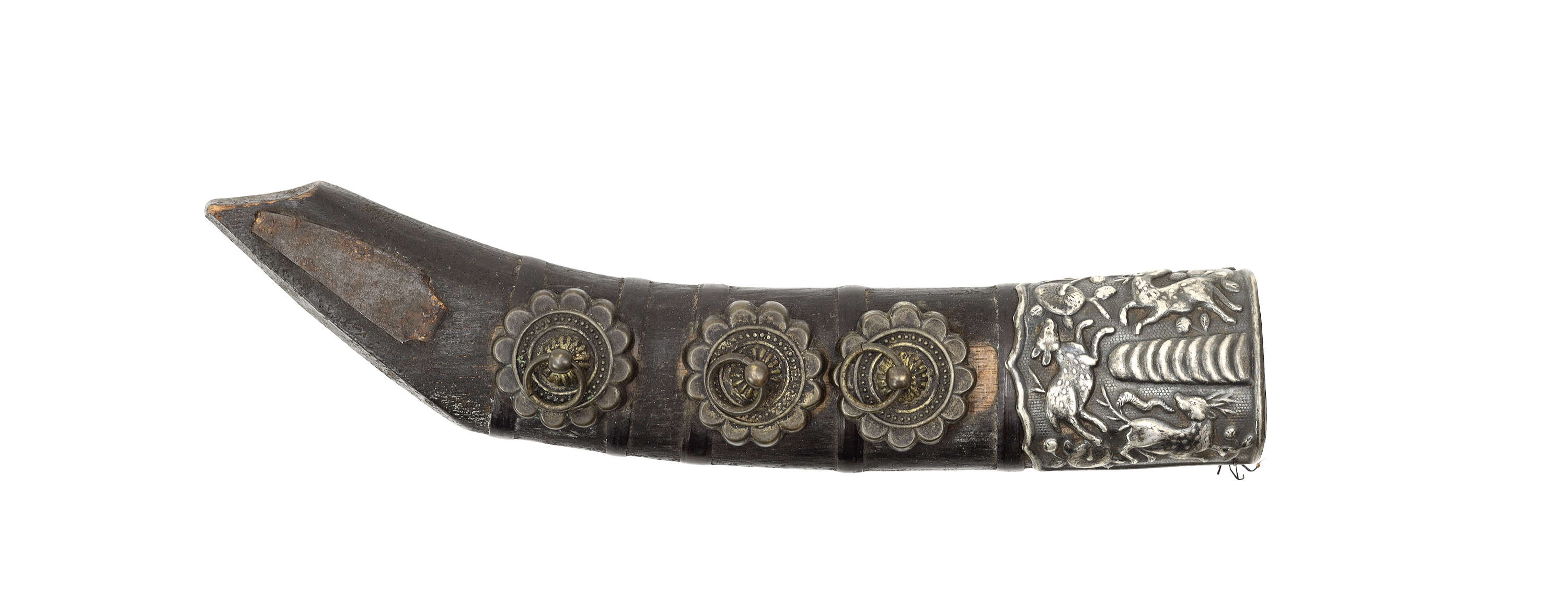
A good Ainu sword hilt with its typical ornamentations.
Production
Based on the world of ethnographers and travelers of the 19th century, it is widely believed that the Ainu produced no metalwork and certainly no iron or steel. However, archaeologists have uncovered iron and steel production facilities dating from the late 17th century that prove otherwise.1
Production and possession of iron became strictly regulated by the Matsumae clan of Hokkaido following a 1669-1672 revolt of the Ainu against the Matsumae.2 From then on, many were kept hidden in collections, or as we see in the antique record, some were mounted with short-ish blades unsuitable for actual fighting.3
While production was most likely seized by the late 18th century, it seems the Ainu were still able to improve on low-quality articles they obtained by trade:
"...although it was strictly forbidden by the Matsumae to give iron material to the Ezo [Ainu], many iron products, including carpenters tools, had been passing to the Ezo [Ainu] for a long time. Such products were always of low quality but when the Ezo [Ainu] received them they transformed them into ones of higher quality." 4
-Furukawa Koshöken, 1788
Notes
1. Yuriko Fukasawa; Ainu archaeology as ethnohistory; Iron technology among the Saru Ainu of Hokkaido in the 17th century. Pages 48-49.
2. Ibid.
3. See our Ainu sword listed here, and one with a similar non-fuctional blade in the Penn Museum, accession number A469B.
4. Translation by Yuriko Fukasawa. Ibid.
Cultural significance
Ethnographers in the 19th century noted that their swords were primarily used during ceremonies for expelling evil.2 The older the sword, the more powerful it was, and so many wealthier Ainu families kept collections of older swords. One of the earliest references to Ainu swords is from 1645 where Maarten Gerritszoon Vries observed that they hung the sword of a respectable deceased over his grave.3
Notes
1. Yuriko Fukasawa; Ainu archaeology as ethnohistory; Iron technology among the Saru Ainu of Hokkaido in the 17th century. Pages 48-49.
2. John Batchelor; An Ainu-English-Japanese dictionary (including a grammar of the Ainu language). Tokyo Methodist Publishing House, 1905. For the ritual, see, same author: The Ainu of Japan: the religion, superstitions, and general history of the hairy aborigines of Japan. London, Religious Tract Society, 1892.
3. Reize van Maarten Gerritszoon Vries in 1643 naar het noorden en oosten van Japan, volgens het journaal gehouden door C. J. Coen, op het schip Castricum. Amsterdam, F. Muller, 1858. Page 377
Tombe
The older swords that were treasured by the Ainu were called tombe; literally "shining things". Due to the prohibition on iron arms enforced by the Matsumae clan of Hokkaido, most were bladeless by the time ethnographers got to see them.1
"The tomhe are ancient swords - old heirlooms, which, however, are how bladeless, for the Ainu were not allowed by the ancient Japanese to have any blades in their swords. These bladeless swords are usually stowed away in long boxes, and placed upon the beams of the huts."
Notes
1. Yuriko Fukasawa; Ainu archaeology as ethnohistory; Iron technology among the Saru Ainu of Hokkaido in the 17th century. Pages 48-49. John Batchelor; The Ainu of Japan. Page 49.
2. John Batchelor; The Ainu of Japan. Page 49.
Some postcards showing Ainu with swords
Here is a small collection of postcards I have showing Ainu with swords.
